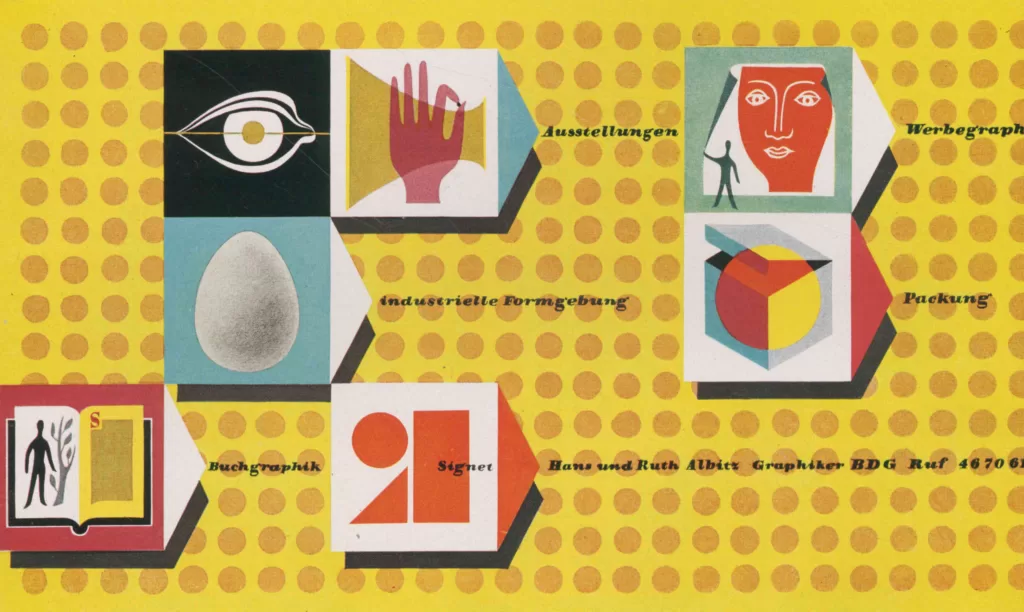
Share:
Original images and text scanned from Gebrauchsgraphik, 11, 1952
Among the young graphic artists of Berlin, who set to work after the war, Hans Adolf Albitz and Ruth Albitz-Geiß can claim special attention. In a short time, at a period when economic conditions were pretty unfavourable, they worked themselves so to the fore that their names came to mean something in Berlin publicity, and in western Germany their posters are known and appreciated, too.

As always when good partnership may be presumed, the success of this married couple is due to the law of polarity, which means permanent compensation and complement. Hans Adolf Albitz is static-minded, sober and practical, and it is but logical that he prefers creating useful work, such as arranging exhibitions and doing typography. Ruth Albitz-Geiss, however, prefers picturesque themes, she broadly depicts everything colourful and vivid.
From the very beginning both of them have been striving for an applied art serving the purpose, namely: appealing to the public. Nevertheless, they have never made any concession to the average in matters of art as, unfortunately, is so often the case when young designers have to adapt themselves to their patron’s customary mode and opinion so that they lose their own personality. The superior handicraft of these two artists, their skill in drawing and their knowledge about what is essential in sale-promotion are facts convincing any patron of industry or trade and commerce. The designs try to please in many a way and the public is always taken by surprise. It is as if their figures as well as their inanimate objects would smile sometimes, even forcing a smile from the contemplator, at other times they are loudly and irritably crying out and, if necessary, they are even not afraid of causing a shock. However, never the wrong means are applied. The urge to succeed won’t let these two graphic artists rest. Again and again, they take leisure to improve, and they set themselves such tasks as might be commissioned to them one day. They enjoy themselves and brighten up the contemplator as well, by off and on doing some publicity work «in their own interest».

Sometimes they create a large-sized poster for which the space is granted by the active Berlin «Vereinigte Verkehrs-Reklame». Thus they want to prove to their advertising customers how much more preferable works «made to measure» are to the normal DIN-A-1-sizes (594 x841 mm), plastered one next to the other or one above the other. Or they design congratulating cards and illustrations which make the impression of just having been jotted down casually, delighting the receiver. Also, Berlin authorities have posters made by the two Albitz’ for touring propaganda and exhibitions which show up well and to advantage against «ready-made» posters, predominant in Berlin as well as elsewhere, strangely culminating in the publicity for cigarettes and touring. Let us hope that the courage to do better may not be weakened, particularly that of authorities, under the influence of inartistic persons who fancy knowing everything better. Moreover, let us hope that in the federal area publicity business will remain mindful of the hard work done in Berlin, despite many adverse circumstances; besides, as known since ever, triviality has no chance in sale-promoting graphic art. The samples of Hans Adolf Albitz’ and Ruth Albitz-Geiss’ works will justify my statement in full.


